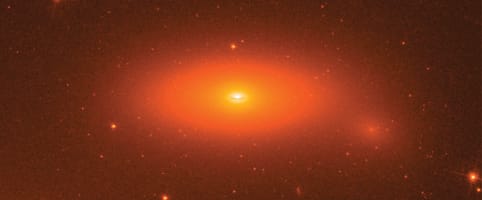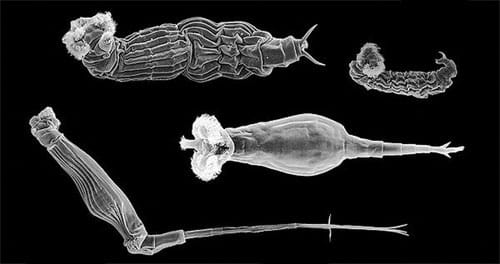Super-massive black hole baffles scientists
Muse would approve

Astronomers analysing data from the Hobby-Eberly Telescope in Texas have spotted an enormous black hole — but in a relatively miniscule galaxy.
Most galaxies, such as our own Milky Way, are thought to have a super-massive black hole at their centre. Current theories suggest that the two grow in tandem, and so, across space, black hole masses are usually roughly proportional in size to their host galaxies.
Current theories of black hole and galaxy evolution may need to be rewritten
But not so with this galaxy, NGC 1277. Where normally the central black hole has a mass of around one thousandth the mass of the host galaxy, NGC 1277 appears to be harbouring one with a relative mass of a whopping 14%. That works out at around 17 billion times the mass of the Sun, and is big for any galaxy, let alone this tiny one!
A report in Nature explains how the team, led by Remco van den Bosch at the Max Planck Institute in Germany, calculated this mass by looking at the velocity dispersion of the stars moving in the black hole’s ‘sphere of influence’. By chance the galaxy also appeared in some high-resolution images taken by the Hubble Space Telescope, and the combined data clearly showed that the inner stars were orbiting extremely fast — suggesting an extremely dense concentration of mass at the galaxy’s centre.
Astronomers are at a loss as to how to explain how such an enormous black hole ended up in this little galaxy, just a quarter the size of the Milky Way. Initially the team looked for signs that a larger galaxy somewhere close by was ‘tidally stripping’ NGC 1277, drawing out and eating away at its stars and gases. But NGC 1277’s near-perfect flat, disc-like shape rules that out, and means it can’t be a superposition of two different galaxies that the astronomers are looking at, either.
What’s even weirder is that the same data also shows five possible other candidates apparently displaying the same odd phenomenon. This suggests NGC 1277 may not be just some astronomical fluke, but actually the beginnings of evidence that current theories of black hole and galaxy evolution need to be rewritten.
DOI: 10.1038/nature11592








